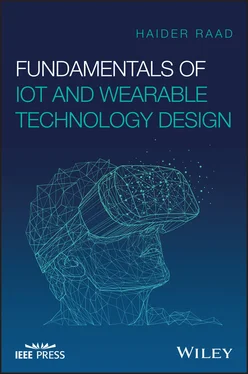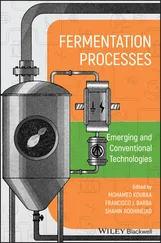Haider has published five books in the fields of Wearable Technology, Telemedicine, and Wireless Systems. He has also published over a hundred peer‐reviewed journal and conference papers on research fields of his interest which include: Flexible and Wearable Wireless Systems, Telemedicine and Wireless Body Area Networks, IoT, Metamaterials, and Biomedical Electronics. He is also the recipient of the 2019 Outstanding Teaching Award, the 19th International Wearable Technology Conference Best Paper Award in 2017, the E‐Telemed Conference Best Paper Award in 2016, Sonoma State University's Research Fellowship Award in 2015, and AAMI/TEAMS Academic Excellence Award in 2012.
Haider loves spending quality time with his family. In his free time, he enjoys composing world, rock, and smooth jazz music. He also enjoys street photography and artistic activities.
Everything will be connected. This is one of the rules that will govern the future. And contrary to popular belief, the impact of Internet of Things and Wearable Technology will be much greater than a smart light bulb or a fitness tracker. Connecting everything will dramatically reshape our world in ways we can barely imagine.
Locating a wandering Alzheimer's patient by sensors embedded within lighting poles in a smart city, or detecting if a driver is having a heart attack by analyzing vital signs and facial expressions by a system integrated within a vehicle's dashboard, are just a couple of scenarios these technologies will be capable of doing. We will also witness the fantasy of fully automated smart cities and driverless vehicles work in coordination with one another fairly soon.
Today, IoT and Wearable Technology are recognized as two of the fastest‐growing technologies and hottest research topics in academia and research and development centers. Wearable devices, which are characterized by being lightweight, energy‐efficient, ergonomic, and potentially reconfigurable are expected to substantially expand the applications of modern consumer electronics. Similarly, there has been a massive interest in smart objects that can be connected to the Internet allowing remote access, processing, and control, which enable innovative services and applications. Such objects are utilized in smart homes, healthcare, power grids, transportation, and numerous other industrial applications.
Although IoT and wearable devices are electronic systems by definition, the study of these interrelated technologies is multidisciplinary and borrows concepts from electrical, mechanical, biomedical, computer, and industrial engineering, in addition to computational sciences. Having worked in this field for almost 12 years in both academic and industrial capacities, I feel the need to compile a comprehensive technical resource that academically tackles the various design aspects of these technologies.
The aim of this book is to provide an extensive guide to the design and prototyping of IoT and Wearable Technology devices, in addition to introducing their detailed architecture and practical design considerations. The book also offers a detailed and systematic design and prototyping processes of typical use cases, covering all practical features. It should be noted that this book attempts to address the design and prototyping aspects of these technologies from an engineering/technical perspective rather than from a maker/hobbyist perspective.
The intended audience of the book encompasses both undergraduate and graduate students working on projects related to IoT and Wearable Technology. The book also serves as an extensive resource for research and development scientists, university professors, industry professionals, and practicing technologists.
It is worth noting that familiarity with fundamental computer programming, mathematics, electricity laws and properties, digital and information theories, and basic networking and computer architecture is required to understand the topics covered in this book.
Chapter 1of this book helps the reader understand what IoT and wearables exactly are and examine their characteristics. The chapter also provides an overview of the history and beginnings of IoT and Wearable Technology and aims at demystifying the differences between the two.
Chapter 2covers the applications of IoT and wearables in various fields. It also provides an insight on the roles these applications could play in practice and discusses the challenges and key success factors for their adoption.
Various architectures used in IoT and wearable devices along with important architecture concepts will be discussed in Chapter 3. Further, simplified and versatile architectures are proposed to help the reader articulate the key functions and elements of IoT and wearable devices.
Chapter 4highlights the capabilities, characteristics, and functionality of sensors and actuators with an understanding of their limitations and their role in IoT and wearable systems. Criteria for selecting microprocessors and communication modules will be discussed next. Additionally, deciding on a suitable energy source with a matching application‐specific power management design is discussed. Finally, the reader will gain an understanding on how to bring these foundational elements together to realize a smart devices that makes most IoT and wearable use cases possible.
Chapter 5takes a look at the characteristics and basics of the communication protocols that IoT and wearables employ for their data exchange, along with a dive into some of the most common technologies being deployed today.
Chapter 6discusses the development process and design considerations that developers must follow to guarantee a successful launch of IoT and wearable products.
Chapter 7provides an overview of cloud topologies and platforms, and an architectural synopsis of OpenStack cloud. Next, Edge topologies and computing technologies will be presented. It will be shown that the maximum value from an IoT or wearable technology project can only be gained from an optimal combination of cloud and edge computing, and not by a cloud‐only architecture.
Chapter 8examines security goals that every designer should aim to achieve. Next, an overview of the most important security challenges, threats, attacks, and vulnerabilities faced by IoT and wearable devices is provided. Finally, a list of security design consideration and best practices and ideas that have historically worked are discussed.
Chapter 9first addresses the privacy issues and concerns arising from IoT and Wearable Technology, including those related to health data and data collected from children. The chapter next turns to safety and health issues then discusses the social and psychological impacts of these technologies. Finally, this chapter examines regulatory actions in the United States performed by the federal government, including the Federal Trade Commission (FTC), National Telecommunications & Information Administration (NTIA), as well as the ones performed by the private sector practicing self‐regulation within the industry. As a means of comparison, this chapter next discusses the regulatory actions taken by the European Union.
Finally, the aim of Chapter 10is to apply the knowledge learned in previous chapters to design two complete IoT and Wearable Technology products from scratch. This chapter will take the reader from concept and engineering requirements through breadboarding, microcontroller coding, PCB design, PCB printing, surface mount considerations all the way to a finished product.
Haider Raad, Ph.D.
Xavier University, USA
The author would like to thank Scott Tattersall and Mustafa Kamoona for their efforts in co‐authoring Chapter 10of this book. He also would like to thank Colin Terry for his help in developing the book's solution manual, and all the book's reviewers for their constructive feedback.
Читать дальше












